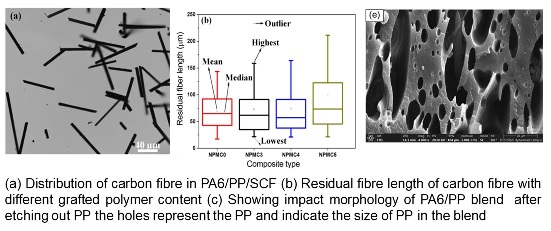The group aims to use environment-friendly approaches to improve interfacial adhesion in polymers, production of nanomaterials, and waste management, with special emphasis on biomass and fly ash.
Areas of Interest:
- Polymer Blends and Composites,
- Surface modification of materials and interfacial adhesion,
- Nanomaterial Synthesis from Agriculture residue,
- Heavy metal removal using agricultural and industrial waste
Broad Overview
Plastic, agricultural, and industrial waste contribute to environmental pollution. They also pose problems such as land management, fire accident, toxic gas releases etc. The use of recyclable polymers is one solution to address the concerns of plastic waste, which is one of our research interests.
Agricultural waste management, along with value addition, is an important issue. We are currently exploring ways to use agricultural waste in bulk and turn it into valuable nanomaterials and polymer composites using green processes. Towards this end, we employ green, biological processes such as enzyme-based delignification.
The presence of heavy metals in water is of great concern. Our group is also researching the capabilities of agricultural and industrial waste such as fly ash in heavy metal removal .
On-going Research
Thermoset polymer with carbon fibre reinforcements are used in various industrial applications such as space, automobile industries. Recyclability is one of the issues with these. Thermoplastic polymers have been looked for as alternative matrices. PA6 is one such polymer. However, hydrophilicity is one of its drawbacks, which is overcome by blending with hydrophobic PP. PA6/PP-blends were reinforced with carbon fibre. Residual length plays an important role in determining the final properties of the composites made, which was studies and depicted in figure (a) and (b). Morphology of the blend plays a vital role in determining its properties, such as interfacial adhesion. The PA6/PP blend morphology is depicted in figure (c).

The use of industrial waste in fly ash is beneficial as it will solve the management problem of fly ash waste. Fly based composites with PP were made. Dispersion of fly ash in PP is crucial for getting good properties of the composites. Effect of various treatments studies. Figure (d) shows the spherical fly ash particles.
Value addition of agricultural mass by turning them to nanomaterials such as nanocellulose is of great interest. The use of chemo-biological routes is an emerging area of interest. Our research group is working on using enzymes and fungal treatment of biomass for lignin removal. Figure (e) represents the optimization of parameters like size and days for fungal treatment used to produce nanocellulose.